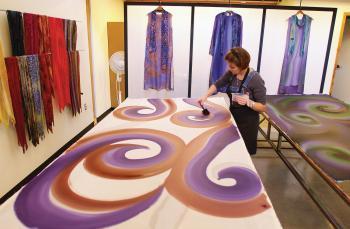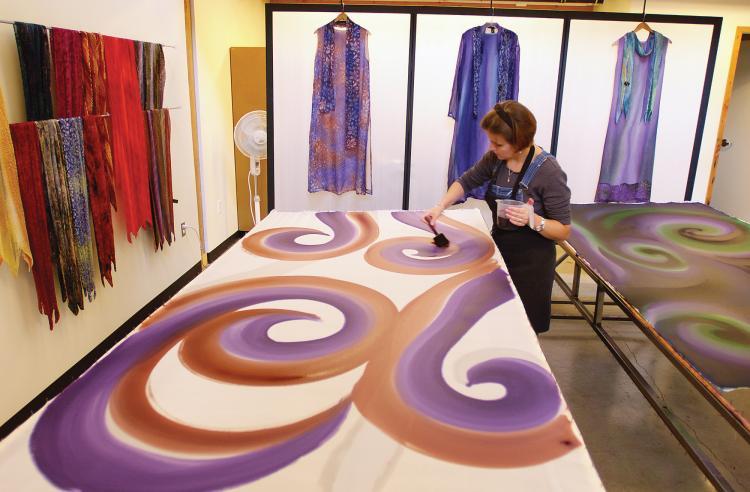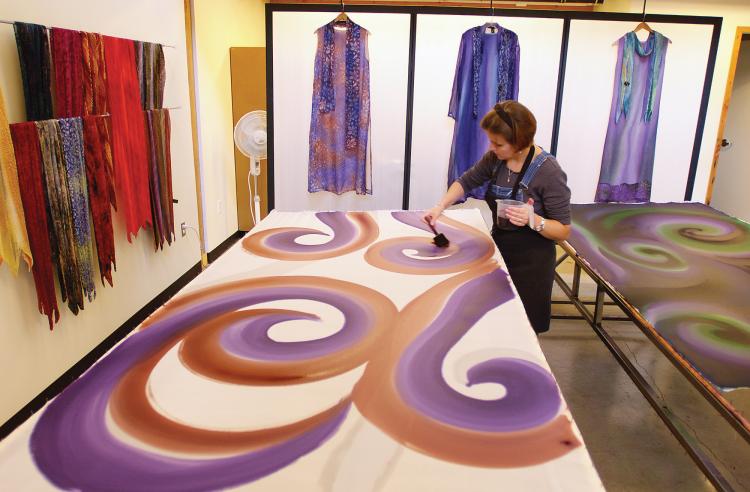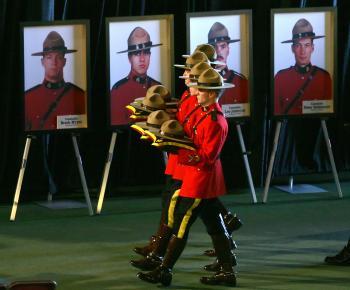Granville Island has a special niche not only in Vancouver but in Canada. A unique local and international tourist hot spot located under Vancouver’s Granville Bridge, Granville Island offers a distinct and vast array of specialty shops, activities, and attractions.
This year marks the island’s 30th anniversary, and right now, at the height of the summer season, an abundance of tourists and locals alike can be seen shopping, browsing, dining, and relaxing, all the while soaking up the island’s friendly and non-commercial atmosphere
Lisa Ono, Granville Island’s public affairs and programming manager, estimates that the area draws 10.5 million people each year, most of whom are locals. It’s the local feel of the island that tourists particularly enjoy, she says.
“I think that for tourists or visitors, what they love about Granville Island is that they get to feel like a local. They get to experience what it would be like to live in Vancouver and just come down here for an afternoon or whatever—they don’t feel like it’s a tourist destination. It’s for everyone, it belongs to the people of the city.”
A real treat for shoppers is the fact that there isn’t a chain store in sight. Most of the products are either homemade or locally grown and crafted, and many of the shops are one-of-a-kind.
For art lovers, there are about 50 independent artists who have their own studios tucked away in various nooks and crannies. At Ocean Art Works, visitors get a chance to watch First Nations carvers at work. The island is also home to the prominent Emily Carr Institute of Art and Design.
At the Kids Market, a 100-year-old factory building next door to the largest free outdoor water park in North America, families can enjoy games, rides, and indoor play areas. There are 24 shops at the Kids Market that sell quality toys and parenting products, clothing, party supplies, and novelty items just for kids.
There is also a Maritime Market for boaters and seafarers. Visitors can rent a kayak, take sailing and scuba diving lessons or charter a fishing boat.
The diverse palate of food on offer is another unique feature of the island, and one of its biggest attractions every Thursday during the summer is the famous Farmer’s Market. There is also a popular Public Market which offers “a different food shopping experience,” says Ono.
“Basically anything edible that you can think of is available in that market and it’s really very high quality. We have local chefs shopping in that market all the time on a daily basis. They go in there and get their food for the restaurant that day.”
Granville Island store owners are themselves frequent shoppers who contribute to and are passionate about sustainability and buying local.
Darren Monette, owner of pet boutique Woofles and Meowz, uses ingredients such as fresh organic lamb and lamb base, free range eggs, and organic cheeses—most of which are bought on Granville Island or within a radius of 200 miles.
“Over 50 percent of the store is all local merchandise, which is really hard to do in a retail environment,” he says.
“We actually bake all of our stuff right here in the store. We’re pretty famously known for our organic treats, all really good ingredients.”
Monette also owns and operates the island’s popular train caboose which once belonged to the Canadian Pacific Railway and is part of the historical character of the island.
In the 1920’s, Granville Island was a booming industrial site for British Columbia’s mining and forestry industries. By the end of World War II and with the changing economic climate, however, most of the warehouses and factories became derelict and run down.
In 1972 a redevelopment plan transformed the area into a public space that now houses art studios, professional theatres, craft shops, restaurants and a wide range of other businesses to cater to local and international visitors.
Since then, Vancouverites have adopted Granville Island as their own, says Ono.
“Within the Lower Mainland there’s a real sense of ownership and pride about Granville Island. People really feel like it’s their place, and they really want it to remain this [way]. They want to keep that local flavour.”
This year marks the island’s 30th anniversary, and right now, at the height of the summer season, an abundance of tourists and locals alike can be seen shopping, browsing, dining, and relaxing, all the while soaking up the island’s friendly and non-commercial atmosphere
Lisa Ono, Granville Island’s public affairs and programming manager, estimates that the area draws 10.5 million people each year, most of whom are locals. It’s the local feel of the island that tourists particularly enjoy, she says.
“I think that for tourists or visitors, what they love about Granville Island is that they get to feel like a local. They get to experience what it would be like to live in Vancouver and just come down here for an afternoon or whatever—they don’t feel like it’s a tourist destination. It’s for everyone, it belongs to the people of the city.”
A real treat for shoppers is the fact that there isn’t a chain store in sight. Most of the products are either homemade or locally grown and crafted, and many of the shops are one-of-a-kind.
For art lovers, there are about 50 independent artists who have their own studios tucked away in various nooks and crannies. At Ocean Art Works, visitors get a chance to watch First Nations carvers at work. The island is also home to the prominent Emily Carr Institute of Art and Design.
At the Kids Market, a 100-year-old factory building next door to the largest free outdoor water park in North America, families can enjoy games, rides, and indoor play areas. There are 24 shops at the Kids Market that sell quality toys and parenting products, clothing, party supplies, and novelty items just for kids.
There is also a Maritime Market for boaters and seafarers. Visitors can rent a kayak, take sailing and scuba diving lessons or charter a fishing boat.
The diverse palate of food on offer is another unique feature of the island, and one of its biggest attractions every Thursday during the summer is the famous Farmer’s Market. There is also a popular Public Market which offers “a different food shopping experience,” says Ono.
“Basically anything edible that you can think of is available in that market and it’s really very high quality. We have local chefs shopping in that market all the time on a daily basis. They go in there and get their food for the restaurant that day.”
Granville Island store owners are themselves frequent shoppers who contribute to and are passionate about sustainability and buying local.
Darren Monette, owner of pet boutique Woofles and Meowz, uses ingredients such as fresh organic lamb and lamb base, free range eggs, and organic cheeses—most of which are bought on Granville Island or within a radius of 200 miles.
“Over 50 percent of the store is all local merchandise, which is really hard to do in a retail environment,” he says.
“We actually bake all of our stuff right here in the store. We’re pretty famously known for our organic treats, all really good ingredients.”
Monette also owns and operates the island’s popular train caboose which once belonged to the Canadian Pacific Railway and is part of the historical character of the island.
In the 1920’s, Granville Island was a booming industrial site for British Columbia’s mining and forestry industries. By the end of World War II and with the changing economic climate, however, most of the warehouses and factories became derelict and run down.
In 1972 a redevelopment plan transformed the area into a public space that now houses art studios, professional theatres, craft shops, restaurants and a wide range of other businesses to cater to local and international visitors.
Since then, Vancouverites have adopted Granville Island as their own, says Ono.
“Within the Lower Mainland there’s a real sense of ownership and pride about Granville Island. People really feel like it’s their place, and they really want it to remain this [way]. They want to keep that local flavour.”





